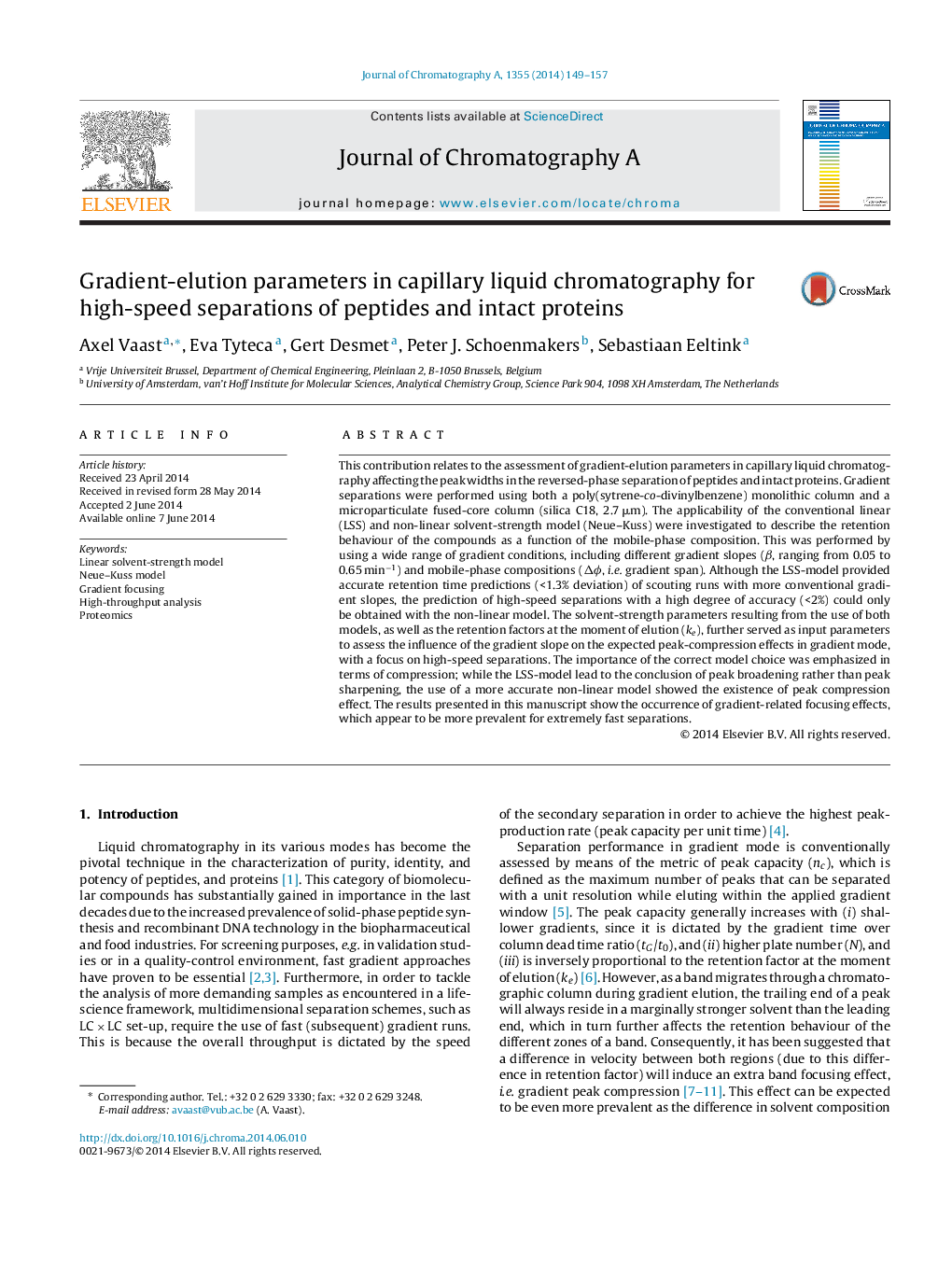| کد مقاله | کد نشریه | سال انتشار | مقاله انگلیسی | نسخه تمام متن |
|---|---|---|---|---|
| 1199791 | 1493571 | 2014 | 9 صفحه PDF | دانلود رایگان |
• Ultra-fast gradient separations are essential for high-throughput applications.
• Peptides and proteins were separated on monolithic and fused-core capillary columns.
• Elution parameters were determined with a linear and non-linear (Neue–Kuss) model.
• Retention time predictions for fast gradients were more accurate with Neue–Kuss.
• Gradient compression effects could be observed and related to high gradient slopes.
This contribution relates to the assessment of gradient-elution parameters in capillary liquid chromatography affecting the peak widths in the reversed-phase separation of peptides and intact proteins. Gradient separations were performed using both a poly(sytrene-co-divinylbenzene) monolithic column and a microparticulate fused-core column (silica C18, 2.7 μm). The applicability of the conventional linear (LSS) and non-linear solvent-strength model (Neue–Kuss) were investigated to describe the retention behaviour of the compounds as a function of the mobile-phase composition. This was performed by using a wide range of gradient conditions, including different gradient slopes (β, ranging from 0.05 to 0.65 min−1) and mobile-phase compositions (Δϕ, i.e. gradient span). Although the LSS-model provided accurate retention time predictions (<1.3% deviation) of scouting runs with more conventional gradient slopes, the prediction of high-speed separations with a high degree of accuracy (<2%) could only be obtained with the non-linear model. The solvent-strength parameters resulting from the use of both models, as well as the retention factors at the moment of elution (ke), further served as input parameters to assess the influence of the gradient slope on the expected peak-compression effects in gradient mode, with a focus on high-speed separations. The importance of the correct model choice was emphasized in terms of compression; while the LSS-model lead to the conclusion of peak broadening rather than peak sharpening, the use of a more accurate non-linear model showed the existence of peak compression effect. The results presented in this manuscript show the occurrence of gradient-related focusing effects, which appear to be more prevalent for extremely fast separations.
Journal: Journal of Chromatography A - Volume 1355, 15 August 2014, Pages 149–157
